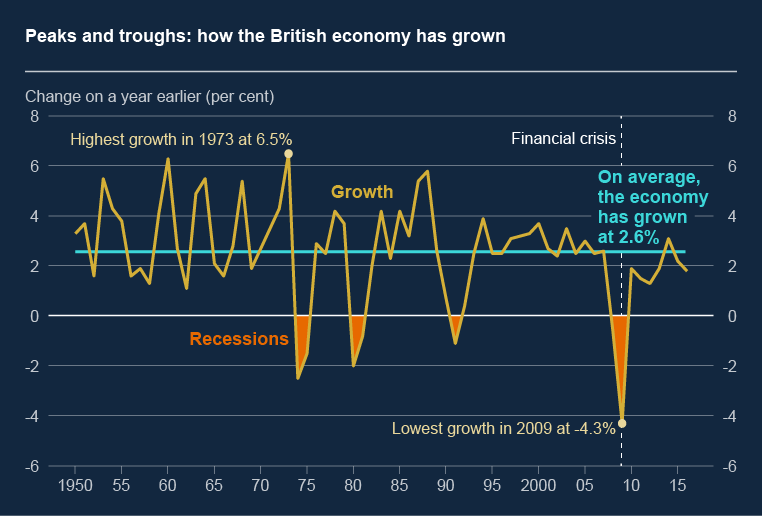Why does the economy have a speed limit?
If the economy grows faster than it has capacity to, prices will rise quickly and things become more expensive. This happens when people want to buy more than shops and factories can supply.
Economic growth is measured in terms of gross domestic product (GDP). You can calculate GDP by adding up what everyone has spent: households, the Government, businesses and so on.
As such, GDP represents the total demand for goods and services in the UK. When the economy is growing, this means people are spending more. But retailers and factories can only supply so much at any given time.
Imagine if this winter is unexpectedly wet and demand for umbrellas surges. Shops and manufacturers can only supply a certain amount in a short time. If they struggle to keep up with demand, they will push up prices – perhaps significantly – to make more money.
It’s expected that prices will sometimes spike for some particular item, such as umbrellas. But if demand outpaces supply across all industries in the economy at the same time, then prices could increase rapidly across the board. This means you might get high rates of inflation.

What determines how quickly an economy can grow?
Many factors impact the amount of goods and services the economy can supply. Economists call this the ‘supply capacity’ of the economy. It tends to increase over time because we get better at using workers, machines, factories and so on. Here we look at three causes:
First, if businesses invest in new factories and research and develop better ways of doing things, they’re able to increase their output.
Next there’s the size of the workforce: more workers means more potential output. And having a specialised workforce where people focus on certain tasks tends to be more efficient. Because they specialise, they get faster and better at their job.
Think about when you order pizza: typically, one person is in charge of buying the ingredients, another cooks it and a third one delivers it to you. If the same person had to do all of these tasks while handling multiple orders, your pizza would probably be cold upon arrival.
Finally, to grow, the economy needs high-quality infrastructure that makes transport and communication quick and cheap for businesses and workers. This could include anything from broadband to railways.
How quickly the supply capacity increases puts a speed limit on economic growth. If the economy grows faster than the supply capacity, prices of goods and services will rise rapidly.
What is the speed limit today?
We think the economy’s speed limit will average just over one per cent a year over the next three years. That’s lower than in most years before the 2007–08 financial crisis. Find out more in our Monetary Policy Report.

Growth has varied over time. On average, the economy has grown by 2.6% per year since 1949.
The fastest the economy has grown since 1949 was at an annual rate of 6.5% in 1973. By contrast, following the financial crisis, growth plummeted to -4.3%.
For a longer view on economic growth, our explainer 'How has growth changed over time?' looks at economic growth going back to 1000 BC.
